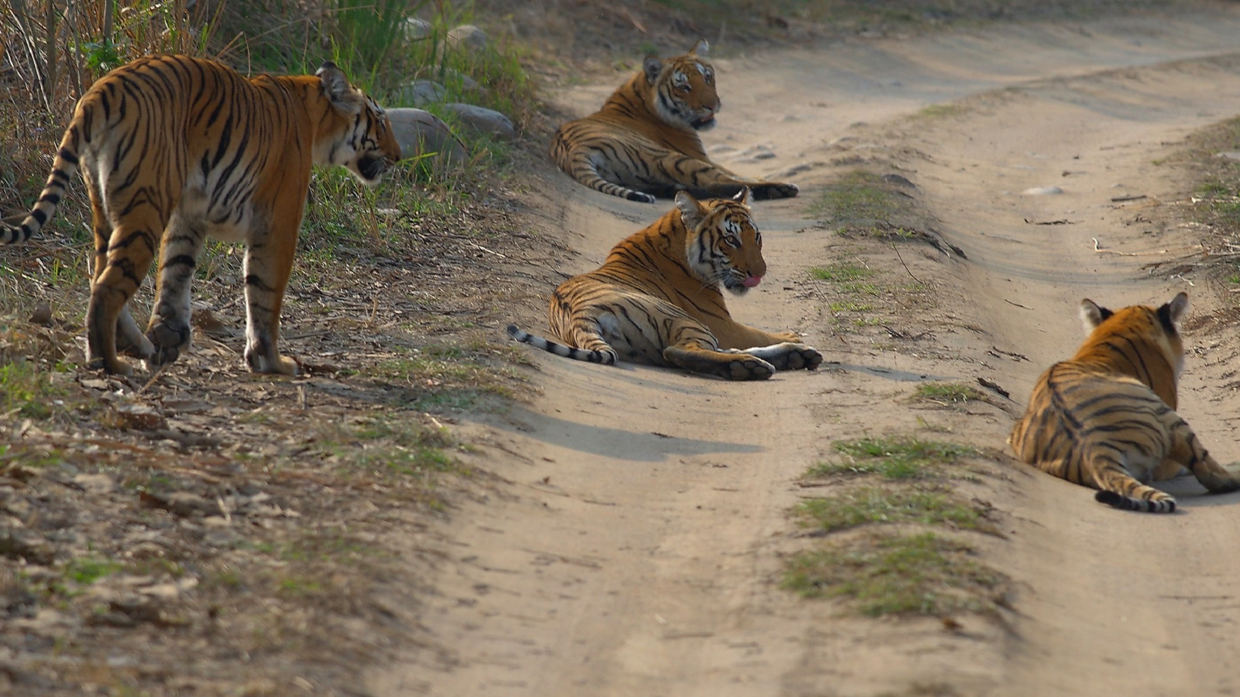
The healthy upswing in their native habitats takes India's tiger population to 2,967 in reserves across the country. In 2014, that figure was around 1,600.
Global Tiger Day is observed on 29 July every year to raise awareness about the declining population of the great cats and making efforts to conserve them.
India has 70% of the total tiger population of the world.
— Manoj kr. solanki (@Manojso33557724) July 28, 2020
# Global tiger day 2020
Tigers need space,isolation and protection , the rest they will look after. "SAVE THE TIGER" pic.twitter.com/IMTYEA1TJV
The increase in India's tiger population can be attributed to the launch of a conservation programme called Project Tiger almost 50 years ago.
'Soft power'
“There were nine tiger reserves when Project Tiger started in 1973. Now, India has 50 tiger reserves," says Environment Minister Prakash Javadekar at the release of the tiger census report. "Seventy percent of the world’s tigers are in India and the conservation effort has been a huge success.
"At the international level, we have a lot of soft powers, but one soft power is that the country has animals. India has 30,000 elephants 3,000 one-horned rhinos and more than 500 lions."
According to the report, tigers were observed to be increasing at a rate of 6 percent annually in India from 2006 to 2018.
The report also evaluates the status of habitat corridors that connect major tiger populations while highlighting vulnerable areas that require conservation.
The massive tiger census is conducted every four years with forest officials and scientists trekking across half a million square kilometres. The latest survey used 26,000 camera traps that took almost 350,000 images across known tiger habitats.
Several states including Madhya Pradesh, Rajasthan, Maharashtra and Karnataka, have shown a considerable surge in their tiger numbers.
Conservation efforts pay off
Animal density in many of these forest areas is high and surplus tigers sometimes venture outside for food, bringing them into conflict with people who live nearby.
Conservationists warn that unless India expands tiger reserves, such conflicts will increase.
With 70 percent of the world’s tiger population, India roars the loudest.
— Tilesmart Vijayawada (@TilesmartV) July 29, 2020
We have taken successful steps in protecting our national animal. It's of extreme importance to preserve our biodiversity & ensure we coexist.
International Tiger Day.
- Team Tilesmart pic.twitter.com/nF4gtecvjR
The numbers are encouraging and we must be proud of our tiger assets. But the way forward is to protect our natural habitats as poaching is still a threat,” S.Nallamuthu, wildlife cinematographer, told RFI.
In 1900 more than 100,000 tigers roamed the planet, but by 2010 the figure had fallen to a record low of 3,200, according to the World Wildlife Fund.
The decline prompted India and 12 other countries with tiger populations to sign an agreement to double their numbers by 2022.
The day was established in 2010 at the St. Petersburg Tiger Summit, Russia, as a move to spread awareness about the decrease in wild tiger numbers to promote tiger conservation work. It brought together some 500 representatives of the 13 Tiger Range States.
Across the world there are currently 13 tiger range countries - India, Bangladesh, Bhutan, Cambodia, China, Indonesia, Lao PDR, Malaysia, Myanmar, Nepal, Russia, Thailand and Vietnam.







